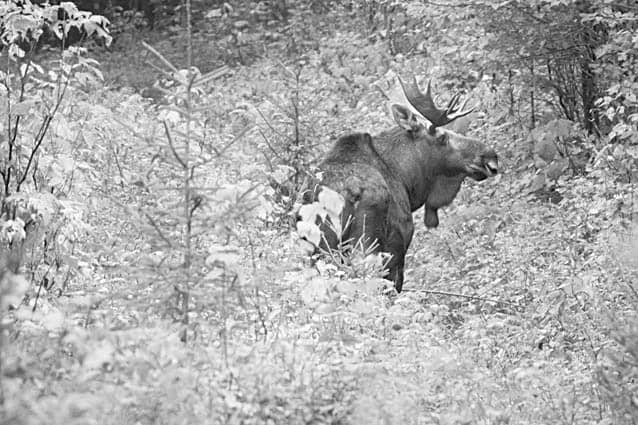
The Vermont Fish & Wildlife Dept. said hunters harvested 40 moose in this year’s regulated moose hunting seasons that were limited to Vermont’s Wildlife Management Unit E in the northeastern corner of the state to reduce the impact of winter ticks on the moose population.
All six of the moose harvested in the Oct. 1-7 archery season were bulls and 29 harvested in the Oct. 17-22 regular season were bulls (five were cows).
The overall hunter success rate was 73%, with 55% success during archery season and 77% in regular season.
“The goal of the moose hunt is to improve the health of moose in WMU E by reducing the impact of winter ticks,” said Nick Fortin, Vermont Fish and Wildlife’s moose biologist.
“Moose density in WMU E is more than one moose per square mile, significantly higher than any other part of the state. Moose densities greater than one per square mile support high numbers of winter ticks which negatively impact moose health and survival.”
The Fish & Wildlife Dept. and University of Vermont researchers conducted a study of moose health in WMU E, which showed that chronic high winter tick loads have caused the health of moose in that part of the state to be very poor. Survival of adult moose remained relatively good, but birth rates were very low, and less than half of the calves survived their first winter.
“Research has shown that lower moose densities, support relatively few winter ticks that do not impact moose populations,” said Fortin. “Reducing moose density decreases the number of available hosts which in turn decreases the number of winter ticks on the landscape.



